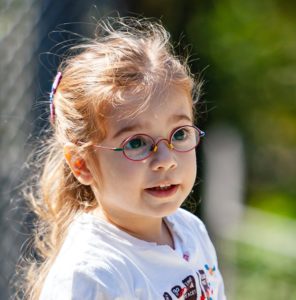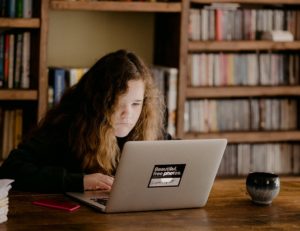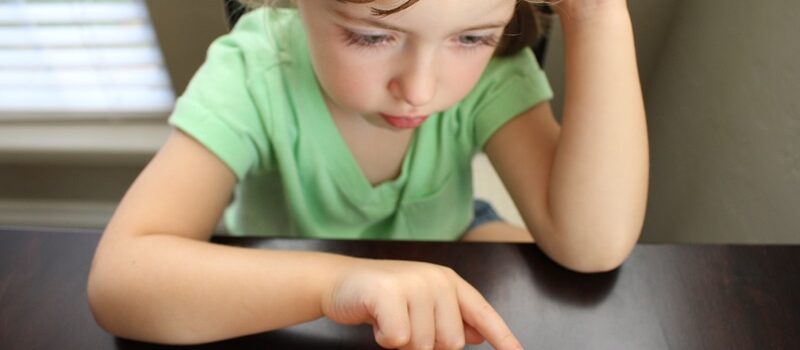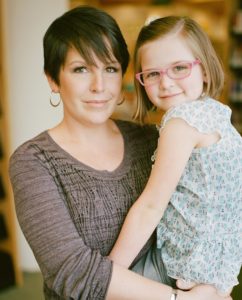What is myopia?
Myopia is blurry long-distance vision, often called short-sightedness or near-sightedness. A person with myopia can see clearly up close – when reading a book or looking at a phone – but words and objects look fuzzy on a blackboard, on television or when driving.
Experts across the globe have concluded, with good evidence, that myopia leads to further sight-threatening conditions.
Myopia is spreading
 Research published in the British Journal of Ophthalmology showed 10 million people worldwide suffered from myopia in 2010. By 2050, it is estimated that more than 50% of the world’s population will have myopia, and 10% or almost 1 billion will have high myopia.
Research published in the British Journal of Ophthalmology showed 10 million people worldwide suffered from myopia in 2010. By 2050, it is estimated that more than 50% of the world’s population will have myopia, and 10% or almost 1 billion will have high myopia.
The proportion of children worldwide with myopia has more than doubled from 7.2 per cent to 16.4 per cent in the past 40 years, and children are developing myopia younger and younger. One report stated that the prevalence of myopia among Australian 12-year-olds has doubled in 6 years.
Myopia epidemic in New Zealand
According to NewsHub in 2018, the number of New Zealand children with short-sighted vision is at ‘epidemic’ levels and many of the children are pre-schoolers. If left untreated, eyesight problems can impact on learning, confidence and sports, or worse.
Myopia in kids tends to worsen throughout childhood. If your child is myopic and already wears glasses, you can do something to stop their vision worsening.
What causes myopia?
Myopia is most often inherited. A person with one short-sighted parent has three times the risk of developing myopia – or six times the risk if both parents are short-sighted
However, the dramatic increase in myopia worldwide strongly suggests environmental causes, such as lack of time spent outdoors and a lot of close work and screen time, such as computer games, drawing or using smart phones and tablets, significantly contribute to its development.
There is help available
But there is a solution, and that solution is early diagnosis and information. Eye tests to catch the early signs of myopia before it fully develops can help slow both the onset and progression.
Myopia control does work. Early, customised intervention and myopia control plans have proven that the progression of myopia can be significantly slowed or even stopped, and the subsequent risks from associated diseases also reduced.
At John O’Connor we can show you the amazing options we have available for slowing down the worsening of childhood myopia - there’s much more to it than just spectacles in increasing strength.
First things first
Get an eye test. Early diagnosis of myopia can save your child’s sight. Your son or daughter might not even know something is wrong. Children with myopia may not be aware that the way they see the world is not the way they could ideally see the world.
It is really important for children to have regular eye examinations. Eye tests are even more critical if one or both parents are short-sighted.
Myopia control
When you come to see our optometrists at John O’Connor, the first thing we will do is talk to you about the methods we can use to try and slow down the progress of myopia. We will talk about OrthoK, overnight reshaping contact lenses that not only provide clear vision during the day, but very effectively protect the eyes from rapidly getting worse.
Orthokeratology, also known as OrthoK therapy, is a non-surgical way of correcting nearsightedness. Very simply, myopia is caused by having an elongated eye shape or an overly curved cornea.
Orthokeratology contacts are specially designed for each patient and work by gently reshaping the cornea to help eyes focus better. Your child would simply wear the special corneal moulds while sleeping. When they wake up, they would have clear eyesight throughout the day. Magic! No need for glasses or daytime contact lenses.
Perfect vision is not permanent, however. Myopia slowly returns after about twelve hours, so users need to wear the Ortho-K lenses at night for them to work their magic again. Over time, clear vision will be longer lasting, and some people even enjoy perfect vision for up to two days!
Long-term myopia help
People with mild to moderate myopia are the primary candidates for OrthoK therapy, and studies show that this corneal reshaping can significantly reduce myopia progression, especially in children.
Slowing myopia
During your visit to either our New Market or Henderson Optometrists, we also talk about decreasing screen time and getting kids outside more often.
Guidelines for myopia control
 Limit screen time! It is vital that we limit the total time kids spend on digital devices of all sorts, and that includes TV, video games, Kindle and smart phone as well as computers.
Limit screen time! It is vital that we limit the total time kids spend on digital devices of all sorts, and that includes TV, video games, Kindle and smart phone as well as computers.
- Children should not spend more than three hours a day – in addition to school time – on close work such as reading, homework or screen-time, including smart phones.
- When using a computer, ensure it is properly positioned to avoid eye strain and take breaks every 20 minutes by looking across the room for 20 seconds
- Outdoor sport and play of at least 90 minutes a day can reduce the risk of myopia – looking at your device when outside doesn’t count!
- Evidence suggests exposure to outdoor light is beneficial in the slowing onset and progression of myopia, but UV protection is still important, so do forget the sunglasses and hats.
Eye strain and learning from home
If kids are being home-schooled and need to be on a screen for several hours a day, there are things we can do to reduce the risks to their sight.
- Make sure the laptop they use has an assigned place, such as a desk, or even one end of the kitchen table, rather than being carried around for use on lounges, in bedrooms or even in bed. This makes it much easier to differentiate between schoolwork and downtime and lessens the never-ending screen time debate.
- Turn down the brightness and contrast settings on your child’s screen to the lowest setting that allows comfortable viewing. Blue light and high contrast are both factors in digital eyestrain.
- Pin up a school planner, showing when the screen can and cannot be used and get them to fill it out with other non-screen-based activities, such as outdoor breaks, board games, art and craft, and even books.
Want to know more about myopia and your children?
We’d be happy to talk you through the causes and the myopia control programmes we can develop for you.
Bringing your children in for an eye test is a critical first step. Then we’d follow that up with a discussion with one of our Auckland optometrists around the best way to manage your child’s myopia.
Full eye exams start from $65 and you can get an eye test at either our Newmarket or Henderson optometry practice. Call 09 522 1283 or 09 836 1731 to book an appointment with one of our Auckland optometrists.


